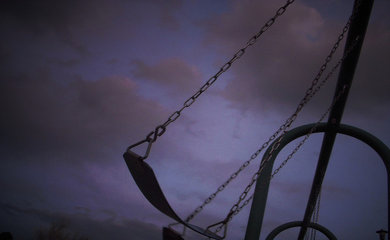Emily Lindin is a blogger who has been posting her 6th grade diary entries online every day. A couple of months into the entries, her 11-year-old self lies on her parents’ bed and tries to think of ways to kill herself. She’s just been dumped – not for the first time – by “Zach,” and her classmates have begun spreading rumors about her sexual experience.
In an aside, modern-day Lindin adds “I didn’t write about it, but I remember my mom coming in at a few different points and trying to comfort me. I wish I hadn’t been so convinced that she would never understand.”
The blog Lindin is writing – “The UnSlut Project” – is intended to make people reconsider our “slut shaming” culture – and along the way, it may remind them of the horrible things they said about other people at that age, or the things that were said about them. It’s also meant to reach victims of bullying today and reassure them that they’re not alone.
As I read the daily entries – and follow Lindin’s depressing march toward social isolation as her friends turn on her – I wonder how much her parents knew. As Amanda Hess points out in Slate, we think of bullying today as having somehow metastasized through technology – through Facebook posts and text messages – when of course Lindin’s blog shows us that children were capable of frightening cruelty even when all they had was AOL Instant Messenger and call waiting to take advantage of. Today, parents and schools might be advised to monitor children’s social media, but “The UnSlut Project” demonstrates the kind of dangerous shaming behavior that might not show up on a Twitter feed.
If Lindin had reached out to her parents – or they had somehow thought to wonder if their daughter’s classmates might be entertaining themselves by calling a fellow 11-year-old a “slut” – what would have happened? When a culture of shaming – or bullying, or violence – is so pervasive, is a savvy parent or well-intentioned school program enough?
I’m not asking to imply that it would not be enough, but because I don’t know. I imagine if a child came to me with those kinds of concerns, I would want to come up with a magical solution. A phrase, a strategy, an after-school program, something. My life as an 11-year-old was drastically different from Lindin’s; I can’t just think back to what would have made me feel better at the time.
I felt a similar helpless disconnect recently when listening to stories about a high school so different from mine, it might as well be on a different planet: This American Life’s two-part series on Harper High School on the southside of Chicago. The stories are shocking in a different way from Lindin’s blog: they come from a school where 29 current and former students were shot over the course of a single year.
Reporter Linda Lutton explains that the old advice to just stay out of the gang scene – just say no, focus on school, play sports, etc. – is not really an option for these kids. The boys are considered members of their local gang as soon as they look old enough to be plausibly involved. If they walk to school alone, they’re seen as vulnerable and are therefore at risk. If they walk in a group, they’re seen as a threat, and are just as much at risk. One boy interviewed says that, to avoid the gang scene, he’s essentially stayed inside as much as possible for the past three years – even avoiding his porch.
It seems like such an extreme situation would be obvious to everyone – especially the parents who live in those neighborhoods too. But it isn’t. In a heartrending segment, reporter Ben Calhoun listens as the father of a murdered 16-year-old boy tries to discuss what happened with his son’s best friend. Having assumed the conflict was personal, the father struggles to understand as the friend explains that not only was it gang-related, but a new gang named after his son has now sprung up. The father had assumed the graffitied initials he saw around were a tribute; instead, they’re evidence of a continuing cycle going on all around him, without his knowledge. He seems barely able to take in the information, blankly repeating: “I don’t like that. I never heard it. I don’t like it.”
I wondered: what if he had known? The series show the staff at Harper doing everything they can think of to stem the violence, but they and their students continually struggle with the thought that nothing will be enough.
This American Life host Ira Glass points out that if 29 children had been shot at a wealthier, suburban school, we would all know the school’s name. It feels like we already know enough schools’ names because of violence, but of course there are more. Through other news reports, we have also memorized the names of several bullying victims who came to tragic ends. But there are more.
These stories force us to realize that there is no single easy fix for any of these problems – and that they are not self-contained, one-off situations. Lindin wasn’t the only 11-year-old frightened and isolated by being called a “slut.” Hadiya Pendleton wasn’t the only good kid in the “wrong place at the wrong time.” By sharing more stories about children at risk, we’re not desensitizing ourselves to the problem – we’re acknowledging its true nature. And maybe by doing that, we can begin to figure out how to help.


Mecklenburg Ministries of Charlotte, NC, has put together a wonderful video, Souls of Our Children, which addresses bullying. It is used in our CMS schools. The helplessness so well expressed here is addressed by community building and understanding.